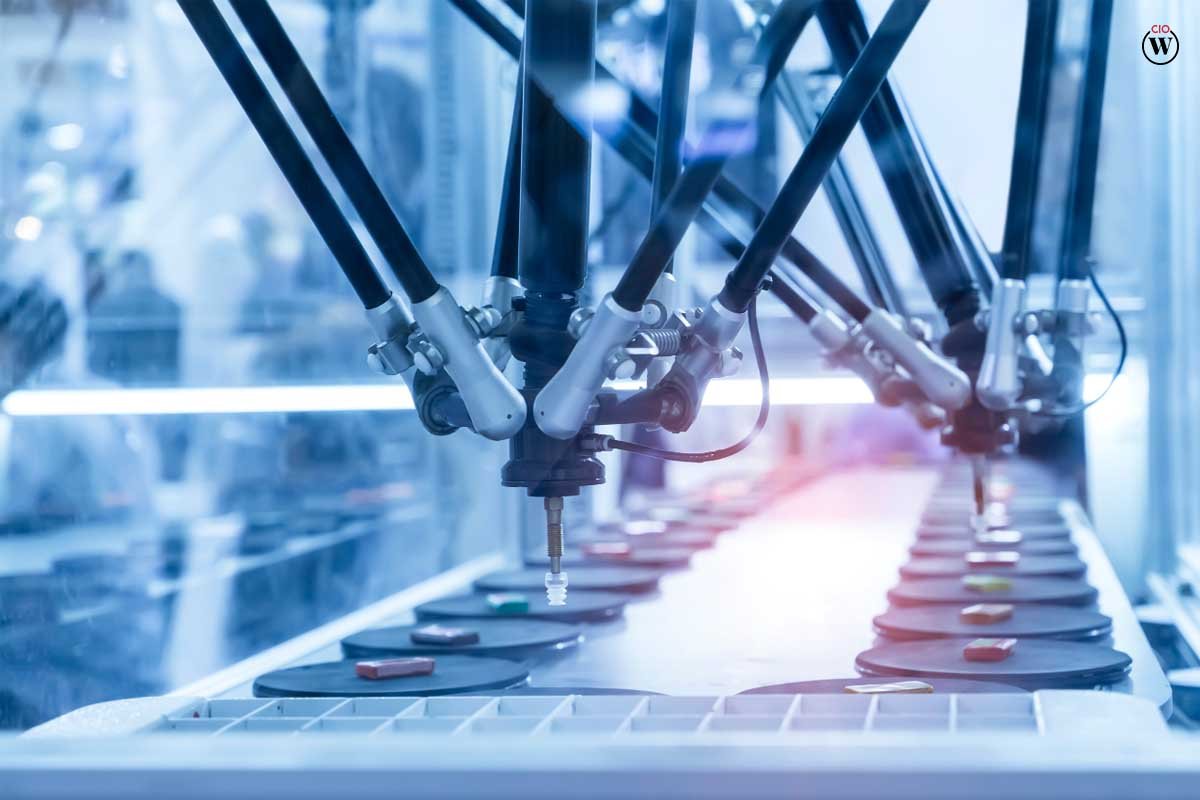The biopharma industry AI tools are finally changing because of how quickly and how much medical and scientific progress is being made. New business models are being made because patients want to be more involved and have a better experience. Biopharma’s new currency is data that is made, captured, analyzed, and used in real-time by new medical devices. One of the most important things that set companies apart is how well they can get insights and proof from multiple data sources. Since this is the case, digital transformation is a strategic must. This report explains how technologies that AI tools are finally changing use artificial intelligence will affect the biopharma value chain and speed up the digital transformation of biopharma.
Even though there is a lot of innovation in the industry, biopharma companies are facing a complex and difficult environment due to more competition and longer R&D cycle times, less time on the market, patents that are about to expire, falling peak sales, pressure around reimbursement, and more scrutiny from regulators. As we’ve shown in our series of reports on “Measuring the return from pharmaceutical innovation,” these factors are causing the projected return on investment that large biopharma companies could get from their late-stage pipelines to drop by an alarming amount, which threatens their long-term futures AI tools are finally changing.
Here are some ways that AI tools are finally changing the world of biopharma;
Some biopharma companies want their chief information officers (CIOs) to lead their digital transformation efforts, while others have hired chief digital officers (CDOs), who are often from other industries, or chief digital information officers (CDIOs), who combine many of the skills of a CIO and a CDO.
No matter what their job title is, those in charge of digital transformation in biopharma companies need to use data and new digital technologies to the fullest to change their business and operating models. The most anticipated and important of these technologies are those that fall under the term “AI.”
At the moment, machine learning (ML) is the most important part of many AI technologies. Recent improvements in ML algorithms and the more complicated part of ML called deep learning (DL) are what are getting people excited. Until recently, many companies didn’t have the skills to make the most of AI tools are finally changing. This is because finding the right use cases, making custom solutions, and using these solutions at the scale required access to large data sets, specialized infrastructure and processing power, and a team of data and analytics experts. 7 Using it on a large scale also required a lot of money to be spent.
Today, this is quickly changing as tech giants and start-ups that were early to use AI offer AI-based development tools and apps as products and services, so that other companies can also use AI. Biopharma companies have access to large data sets, and the resources to get the computing power and top technical talent they need and are in a good position to profit from AI if they invest early AI tools are finally changing.
1. The market for AI in biopharma
MarketsandMarkets predicts that the market for AI tools are finally changing in the biopharma industry and will grow from $208 million in 2018 to $3.88 billion in 2025, which is a compound annual growth rate (CAGR) of 52.9%.
8 These values are different in each of the four regions: North America, Europe, Asia-Pacific (APAC), and the Rest of the World (RoW), which includes South America, Africa, and the Middle East (see figure 3).
Between 2018 and 2025, it is expected that drug discovery, precision medicine, medical imaging and diagnostics, and research will drive most of the AI tools that are finally changing in biopharma. During the period of the forecast, drug discovery will be the biggest market. It will grow from $159.8 million in 2015 to $2,999.7 million in 2025, which is a CAGR of 52.0%. Over the next five years, the market for precision medicine is expected to grow by 60.2% per year, from $16.3 million in 2018 to $440,9 million. CAGRs of over 50% are also expected for medical imaging and diagnostics and research (see figure 4).
2. Things that are making AI grow across the value chain.
The growth of global AI tools are finally changing in biopharma and the potential for digital transformation are caused by several things. From a technology and data point of view, transformation is being driven by three things in particular: more data, more powerful computers, and cheaper computers.
3. Biopharma’s future will be driven by AI
Biopharma companies will use technologies to speed up innovation, streamline processes, and get rid of barriers as a result of digital transformation. AI technologies will be at the forefront of this change. They will help improve efficiency, power new products or services, enable new business models, and create a biopharma industry that is very different from what it is now AI tools are finally changing.
4. AI will affect every part of the biopharmaceutical value chain.
AI will affect the whole biopharma value chain. At first, it will do this by collecting and combining information from data (see figure 15). Here are some examples of how AI could be used in the different parts of the value chain AI tools are finally changing.
5. Research and find out
Using AI and computational biology to find new drugs and make them better could make a huge difference in how productive people are. In turn, this will make research and discovery less expensive, faster, and better. It will cut down on the number of drugs that don’t work by finding patterns in a lot of data. It will also improve target identification, safety and effectiveness assessments, and modeling that predicts what will happen and “testing in the computer.”
One important thing that AI tools are finally changing is predicting how molecules will interact with each other. This helps us figure out how diseases work. In turn, these mechanisms could help find new biomarkers, find, design, validate, and optimize new drug candidates, and find existing drugs that could be used for other purposes. Combining AI with other technologies like organ-on-a-chip, 3D cell cultures, and other cell models that mimic human biology in-vitro could reduce the need to test on animals and could eventually lead to the end of Phase 1 clinical trials in healthy volunteers.
At the moment, over 148 start-up companies and over 33 large biopharma companies are using AI to research and find new drugs. They do this through partnerships or on their own.
40–41. Companies are also looking into the possibility of using AI to design and run preclinical experiments, which could help cut down the time it takes to find, develop, and release a new drug AI tools are finally changing.
6. Clinical development
Clinical trials are ready for change because they are taking longer, cost more, and have a lot of manual steps. Also, a lot of trials are never finished. ClinicalTrials.gov was used to register more than 30,000 clinical trials in 2018. Since the year 2000, nearly 300,000 trials have been registered. But less than 5,000 trials reported their results in 2018, and since 2000, less than 35,000 registered studies have reported their results AI tools are finally changing.

Biopharma companies are currently looking into how they can use AI technology to improve their clinical trials. This includes improving trial design and patient recruitment, analyzing both trial results and evidence from the real world, and automating the publication of results to make it faster and more efficient. If the implementation goes well, development costs could go down, people would be more likely to follow the rules, and the results would be better & AI tools are finally changing.
Also, having access to large amounts of data and AI-powered analytics could lead to the creation of highly effective personalized therapies without the need for large-scale clinical trials.
7. Making things and getting supplies
Biopharma manufacturing and supply chains create a lot of real-time data that hasn’t been used in a useful way for many years. But AI tools are finally changing technologies that could change these processes by processing and making decisions about data in real time. This could make supply chains truly data-driven. The potential for end-to-end visibility in manufacturing and supply chains will help biopharma companies improve their supply chain planning, inventory management, demand forecasting, logistics optimization, workforce planning, and purchasing.
Biopharma companies will be able to manage their supply, quality, safety, security, and costs better if they can change processes and track medications in real-time. This will lead to smarter manufacturing and supply chain decisions.

The business world is likely to move away from linear supply chains and toward digital supply networks that are open, flexible, and linked (DSNs). DSNs use digital technologies like sensors, robotic process automation (RPA), blockchain, and advanced analytics to improve the visibility, traceability, and control of products and inventory. ML applied to production data to build compliance and quality risk models that help predict failures and compliance problems is already helping several companies. At the same time, RPA and NLP could automate the creation and filing of compliance reports AI tools are finally changing.
Cell and gene therapies, which are examples of next-generation products, will probably need a different set of skills to make and ship than traditional molecules. These capabilities should include advanced analytics and workflow automation to make it easy to coordinate patient cell collection, manufacturing capacity, cold chain logistics, and delivery of viable products to the transfusion center.
8. Launch and business
Biopharma companies could benefit greatly from being able to see how their products are sold from start to finish. Using AI can help companies plan product launches better, get patients more involved, help doctors make decisions and run marketing operations, and predict decisions about market access and pricing. AI tools are finally changing and are already being used to try to improve engagement by customizing behavioral nudges to each person’s personality, motivations, care journey, and engagement challenges.

Customized engagement with healthcare professionals (HCPs) could help make sure that the right HCPs get the right information at the right time. AI can be used to divide HCPs into different “personas” based on their habits, preferences, and how open they are to marketing messages. To support reimbursement models for new curative therapies and services, it will likely become important to gather evidence to show proof of value AI tools are finally changing.
9. Post-market surveillance and patient support programs
After a drug is released, biopharma companies may also need interoperable health data to keep track of patients, communicate with them from a distance, and offer them personalized treatment options at the right time. For this, patient data must be integrated and analyzed in real-time to figure out if and when an intervention is needed. It will be important to use AI to improve safety, especially to find possible bad things happening or bad things happening in real-time AI tools are finally changing.
It will also be important to learn more about patient monitoring than just safety, and many biopharma companies and start-ups are focusing on this area. AI-powered patient support programs could change the way biopharma interacts with its customers, improve enrollment, adherence, and retention, and improve the overall outcome for patients.








